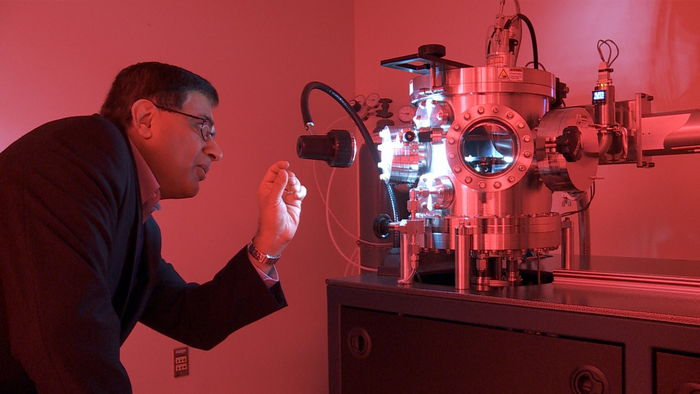BIRMINGHAM, Ala. – Yogesh Vohra, Ph.D., is the principal investigator of a five-year, $8 million grant from the United States Department of Energy’s National Nuclear Security Administration Stewardship Science Academic Alliances program that supports fundamental research in materials under extreme conditions and in advanced manufacturing.

Credit: UAB
BIRMINGHAM, Ala. – Yogesh Vohra, Ph.D., is the principal investigator of a five-year, $8 million grant from the United States Department of Energy’s National Nuclear Security Administration Stewardship Science Academic Alliances program that supports fundamental research in materials under extreme conditions and in advanced manufacturing.
Vohra, a professor university scholar in the University of Alabama at Birmingham Department of Physics and associate dean in the UAB College of Arts and Sciences, says the grant will leverage the expertise of nine faculty members across five disciplines at UAB and the University of Massachusetts-Amherst, Stanford University, the University of California-Irvine and Tuskegee University. The other UAB physics faculty members who have key roles in the research are Wenli Bi, Ph.D., Aaron Catledge, Ph.D., and Cheng-Chien Chen, Ph.D.
In all, the NNSA selected eight universities to receive these cooperative agreements totaling $100 million. The grants establish nine Stewardship Science Academic Alliances, or SSAA, Centers of Excellence to support research activities in physical sciences and engineering.
For the $8 million UAB-led Center of Excellence, Vohra and colleagues will study how certain complex materials respond to extreme environments, such as very high pressures, temperatures and strain rates. The materials of interest to CAMCSE are complex compositions of high-entropy alloys and metallic glasses that are made through “additive manufacturing” technologies. Three-dimensional objects are grown one superfine layer at a time, bonding each layer to the previous layer of melted or partially melted material. It is an advanced form of 3D printing, where an object is formed by adding material, as opposed to more traditional subtractive methods of manufacturing where milling and machining are used to cut away unneeded material.
These additive manufacturing objects can have superior physical and mechanical properties, Vohra says; but little is known about how these far-from-equilibrium structures made under rapid cooling behave under high stresses, high temperatures and high strain rate conditions.
The UAB-led Center of Excellence, called the Center for Additively Manufactured Complex Systems under Extremes, or CAMCSE, will also partner with four national laboratories and sites that work on the NNSA mission. This mission includes maintaining and enhancing the safety, security and effectiveness of the U.S. nuclear weapons stockpile; working to reduce the global danger from weapons of mass destruction; providing the U.S. Navy with safe and militarily effective nuclear propulsion; and responding to nuclear and radiological emergencies in the United States and abroad.
A main objective of the SSAA, the NNSA says, is to develop and maintain a long-term recruiting pathway to support the national laboratories by training and educating the next generation of scientists in critical research areas of science and technology relevant to the nuclear stockpile stewardship.
Part of the UAB-led effort will contribute to that pipeline. “We aim to support internships every year at Department of Energy NNSA labs or sites, and we will place students in postdoctoral positions at the labs or sites during the five years of CAMCSE and beyond,” Vohra said. “Four lab partners — the Los Alamos National Laboratory, the Lawrence Livermore National Laboratory, Sandia National Laboratories and the Nevada National Security Site — will advance our research and training mission.”
The SSAA Centers of Excellence funding opportunity occurs only once every five years. “These cooperative agreements will allow the NNSA to train the smartest and most skilled individuals while creating a direct pathway into our workforce with a diverse group of experts who can meet the evolving needs of the nuclear security enterprise,” said Kevin Greenaugh, Ph.D., chief science and technology officer for Defense Programs at the NNSA.




